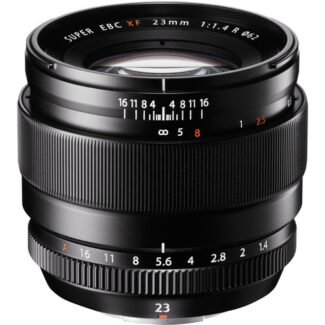Product Highlights
- Micro Four Thirds System Lens
- 50mm (35mm Equivalent)
- Aperture Range: f/1.7 to f/22
- One Ultra-High Refractive Index Element
- Two Aspherical Elements
- Nano Surface Coating
- Stepping AF Motor
- Rounded 7-Blade Diaphragm
Panasonic Lumix G 25mm f/1.7 Overview
A fast, normal prime designed for Micro Four Thirds mirrorless cameras, the Lumix G 25mm f/1.7 ASPH.from Panasonic is a 50mm equivalent lens featuring a bright f/1.7 maximum aperture for enhanced low-light shooting and depth of field control. One UHR (Ultra-High Refractive Index) element pairs with two aspherical elements to reduce spherical aberrations and distortions for consistent edge-to-edge sharpness and illumination. A Nano Surface Coating has been applied, too, and helps to reduce flare and ghosting for increased contrast and color fidelity. The optical construction also helps to realize a compact overall form factor, measuring just 2″-long and weighing 4.4 oz. Benefitting both stills and video capture, this lens also incorporates a stepping motor for smooth, quiet autofocus performance that is compatible with Lumix cameras’ high-speed contrast-detection focusing systems.
- Designed for Micro Four Thirds mirrorless cameras, this lens provides a 50mm equivalent focal length to represent a normal perspective.
- Fast f/1.7 maximum aperture benefits working in difficult lighting conditions and also enables extensive control over focus placement for selective focus applications.
- One UHR element and a pair of aspherical elements help to achieve even illumination and sharpness for consistent performance throughout the aperture range.
- A Nano Surface Coating has been applied to individual elements to noticeably reduce lens flare and ghosting for greater contrast and color fidelity when working in strong lighting conditions.
- Stepping motor delivers fast, smooth, and near-silent autofocus performance to benefit both still photograph and movie recording applications.
- Rounded seven-blade diaphragm produces a smooth out-of-focus quality when working with shallow depth of field techniques.




















Reviews
There are no reviews yet.